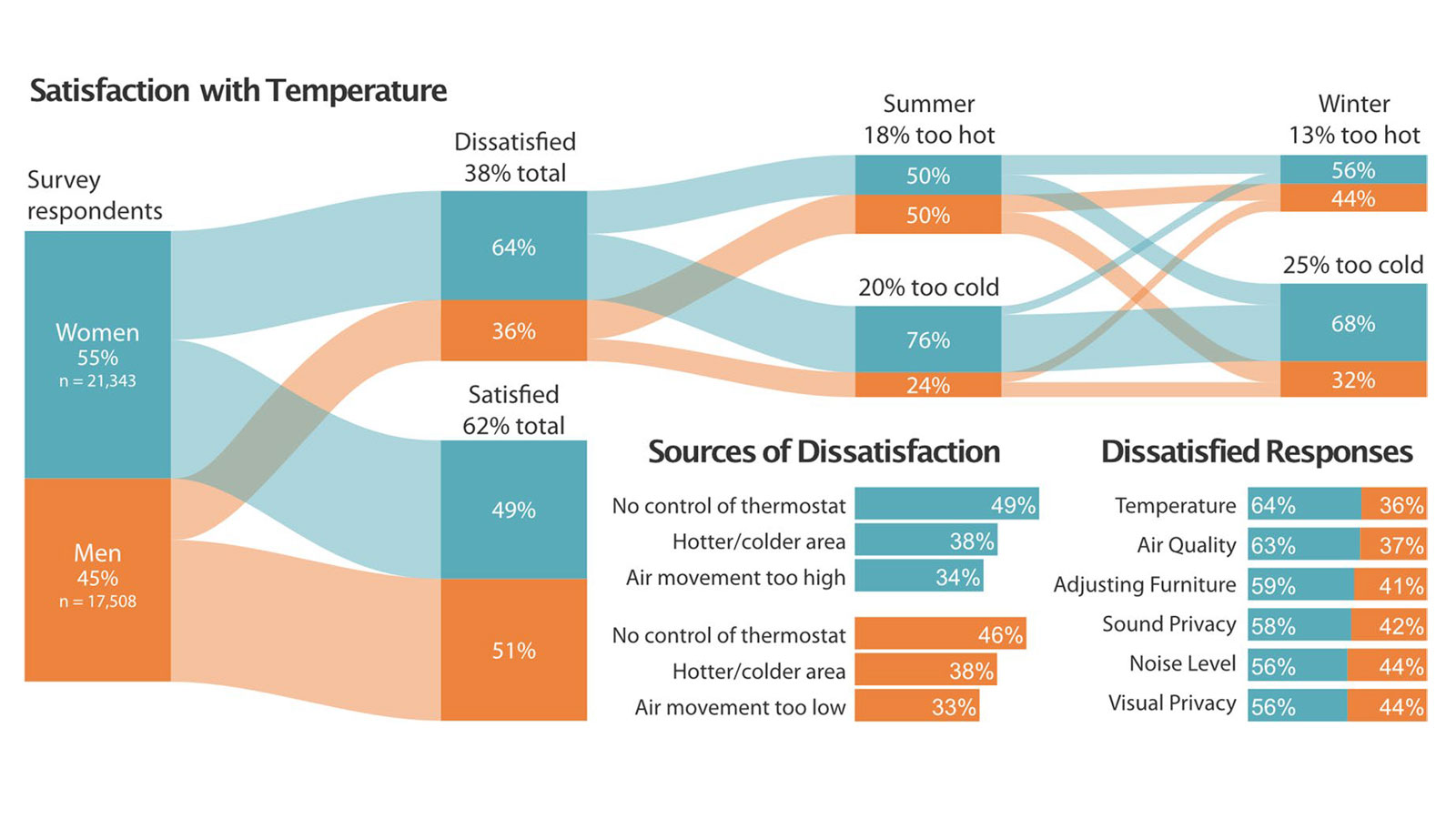Analysis of occupant survey and Twitter data reveal inequities in office comfort.
Status: Completed
Funding Sources: CBE Industry Consortium SinBerBEST2
Project Objective
Previous research and ample anecdotal evidence point indicate that women in offices suffer from less comfort in comparison to men, especially with the frequently observed. The objective of this study was to better understand the status of thermal comfort for women in office buildings.
Project Results
The analysis of survey responses indicates that uncomfortable temperatures are more likely to be cold than hot, regardless of time of year. Twitter data also suggests that overcooling is a common problem in warm weather in offices. The impacts of this frequent overcooling on well-being and satisfaction are experienced more frequently by women.
Significance to Industry
Temperature dissatisfaction is the second most common issue in office environments after acoustics, largely due to excessive cooling. This problem contributed to an estimated $10 billion excess cost in electricity annually, and interferes with the well-being and productivity of the US workforce. Surprisingly, US offices are often cooler in summer than in winter, contrary to recommended standards. Similar overcooling occurs in tropical climates worldwide.
Research indicates that overcooling disproportionately affects women, with gender differences in thermal comfort being most pronounced at colder temperatures. Evidence suggests that temperatures in many US office buildings do not align with women’s thermal preferences and needs. However, the reasons behind this gender disparity have not been directly addressed. Common explanations, such as lower metabolic rates or lighter clothing, inadvertently blame women rather than the office thermal conditions. The authors of this paper suggest that current air-conditioning strategies overcool office buildings, leading to the lower thermal satisfaction for women seen in the literature.
Research Approach
This study conducted analysis on two large and independent datasets from US buildings. This included over 38,000 responses to questionnaire items in the CBE Occupant Survey about satisfaction with temperature, from 435 office buildings across in North America. This unique trove of occupant satisfaction has been used extensively by researchers at UC Berkeley and other academic researchers. This study focused on responses to a question about satisfaction with the temperature in the office. However, the CBE database may be subject to self-selection bias, perhaps with higher quality buildings that are not fully representative of the US office building stock. To complement analysis beyond the survey, researchers used crowd-sourced thermal comfort information from office building occupants via Twitter. This included close to 17,00 tweets with common expressions of cold discomfort in US offices between January 2010 and December 2019. For example, the study searched for tweets containing words such as freezing or cold when in combination with office, desk or building. While Twitter does not publish the gender of users, the authors applied analytical methods to infer the probably gender of a Twitter user based on their username.
Publications and Reports
Parkinson, T., Schiavon, S., de Dear, R., et al. (2021). Overcooling of offices reveals gender inequity in thermal comfort. Sci Rep 11, 23684. https://doi.org/10.1038/s41598-021-03121-1
Presentations
Parkinson, Thomas. Overcooling of Offices Reveals Gender Inequality in Thermal Comfort. Presentation to CBE Industry Advisory Board, Berkeley, CA, October 21, 2021, PowerPoint Presentation.

